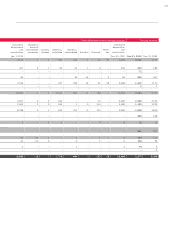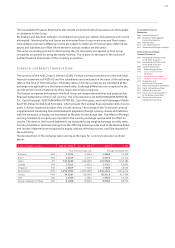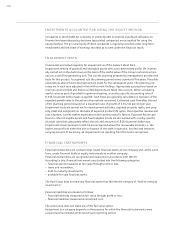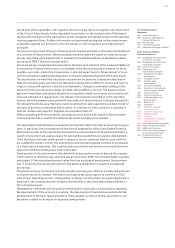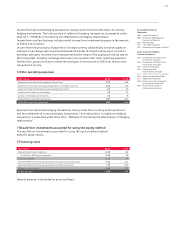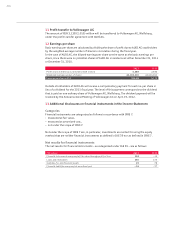Audi 2011 Annual Report Download - page 210
Download and view the complete annual report
Please find page 210 of the 2011 Audi annual report below. You can navigate through the pages in the report by either clicking on the pages listed below, or by using the keyword search tool below to find specific information within the annual report.
207
Consolidated Financial
Statements
188 Income Statement
189 Statement of Recognized
Income and Expense
190 Balance Sheet
191 Cash Flow Statement
192 Statement of Changes in Equity
Notes to the Consolidated
Financial Statements
194 Development of fixed assets
in the 2011 fiscal year
196 Development of fixed assets
in the 2010 fiscal year
198 General information
204 Recognition and
measurement principles
204 Recognition of income
and expenses
204 Intangible assets
205 Property, plant
and equipment
205 Investment property
206 Investments accounted for
using the equity method
206 Impairment tests
206 Financial instruments
209 Other receivables and
financial assets
209 Deferred tax
209 Inventories
210 Securities, cash and
cash equivalents
210 Provisions for pensions
210 Other provisions
210 Liabilities
210 Management’s estimates
and assessments
212 Notes to the Income Statement
218 Notes to the Balance Sheet
227 Additional disclosures
248 Events occurring subsequent
to the balance sheet date
249 Statement of Interests
held by the Audi Group
For purchases and sales in the customary manner, recognition takes place using settlement date
accounting (in other words, on the day on which an asset is delivered).
Initial measurement of financial assets and liabilities is carried out at fair value.
Subsequent measurement is dependent on the category assigned in accordance with IAS 39 and
is carried out either at amortized cost or at fair value.
The amortized cost of a financial asset or financial liability, using the effective interest method,
is the amount at which a financial instrument was measured at initial recognition minus any
principal repayments, impairment losses or uncollectible debts.
In the case of current financial assets and liabilities, the amortized cost basically corresponds to
the nominal value or the repayment value.
Fair value generally corresponds to the market value or trading price. If no active market exists,
fair value is determined using investment mathematics methods, for example by discounting
future cash flows at the market rate or applying established option pricing models.
Financial instruments are abandoned if the rights to payments from the investment have expired
or been transferred and the Audi Group has substantially transferred all risks and opportunities
associated with their title.
Financial assets and liabilities include both non-derivative and derivative claims or commit-
ments, as detailed below.
Non-derivative financial instruments
The “Loans and receivables” and “Financial liabilities measured at amortized cost” categories
include non-derivative financial instruments measured at amortized cost. These include, in
particular:
– loans advanced,
– trade receivables and payables,
– other current assets and liabilities,
– financial liabilities,
– cash and cash equivalents.
Assets and liabilities in foreign currency are measured at the exchange rate on the reporting date.
In the case of current items, the fair values to be additionally indicated in the Notes correspond
to the amortized cost. For assets and liabilities with more than one year to maturity, fair values
are determined by discounting future cash flows at market rates.
Recognizable credit risks associated with “Loans and receivables” are accounted for by carrying
out specific value adjustments. Impairment losses on receivables are regularly posted to sepa-
rate impairment accounts.
The item “Available-for-sale financial assets” includes non-derivative financial instruments
that are either specifically allocated to this category or cannot be allocated to any of the other
categories.
This includes equity instruments, such as equities, and debt instruments, such as interest-
bearing securities.
As a general rule, financial instruments that fall into this category are reported at their fair
value. In the case of listed financial instruments – exclusively securities in the case of the Audi
Group – the fair value corresponds to the market value on the balance sheet date.


